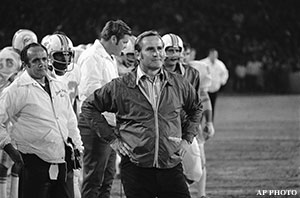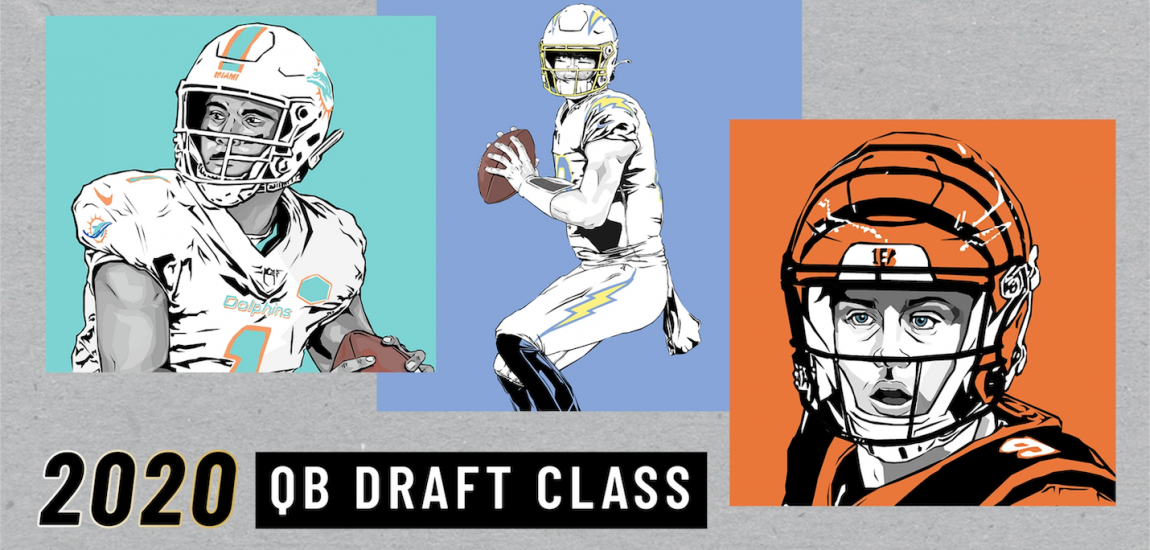Whenever the NFL returns, it will look different. How different? We don't know yet. But the next NFL season is likely to be a landmark in the long history of the game. With that in mind, here are the three most transformational seasons in NFL history. (Cue John Facenda.)
1959
The National Football League was coming off one of its finest hours. Led by fabled quarterback Johnny Unitas, the Baltimore Colts had defeated the New York Giants in sudden death overtime at Yankee Stadium for the '58 title in what was dubbed "The Greatest Game Ever Played." In many ways, that contest proved to be one of the most pivotal moments in the league's history.

But other things were afoot entering the 1959 season. The once-proud Green Bay Packers, winners of six championships during the league's early days, had gone 11 straight years without a winning season, so they hired an assistant coach from the New York Giants named Vince Lombardi. The Packers would finish 7-5 in his debut season, lose the 1960 NFL Championship Game at Philadelphia, and then capture five of the next seven NFL titles -- including the first two Super Bowls. The Pack never suffered a losing season in Lombardi's nine seasons.
Even before the '59 season unfolded, though, another series of events began that would also prove crucial. That summer, the American Football League was formed via the efforts of eigh franchise owners (led by Lamar Hunt). These eight became known as the "Foolish Club." Their product would hit the field in 1960 with teams in Dallas, Houston, Boston, New York, Buffalo, Denver, Oakland and Los Angeles. The AFL conducted its own draft and would go onto do so until 1967, when both leagues (on the verge of a merger) held the first common draft. But from 1960 until 66, many players were selected by both leagues. Hence Hall of Fame quarterback Joe Namath was a first-round pick of the New York Jets and the St. Louis Cardinals in 1965, and fellow Canton enshrinee-to-be Gale Sayers was the first choice of the Chicago Bears and the Kansas City Chiefs that same year.
As it turned out, the Colts and Giants would meet for the championship again and Baltimore would win more convincingly this time. But the landscape of professional football was about to change forever.
1970
The Super Bowl was already four years old (and had officially been given that name after the first two contests were called The AFL-NFL World Championship Game). Both leagues had won a pair of titles -- Vince Lombardi's Packers earned the first two while the AFL's New York Jets and Kansas City Chiefs, respectively, won the latter two.
Now the leagues would combine on the field, with a few adjustments. In order to balance things out, the NFL's Baltimore Colts, Cleveland Browns and Pittsburgh Steelers agreed to join the newly-formed AFC, giving each conference 13 teams. There would be six divisions and a total of eight playoff teams (three division champions and a wild card per conference). The winner of the Super Bowl (in Miami's Orange Bowl) would now take home the Vince Lombardi Trophy, named after the now-late head coach of the Packers and Redskins.

The elder conference had its way with the AFC teams during the regular season, going 27-12-1 in the 40 head-to-head match-ups. The NFC's power teams included the Cowboys, Vikings and 49ers, while the Colts and the Dolphins (led by former Baltimore head coach Don Shula) were the only teams in the AFC to win at least 10 games. One of the best stories in the league came from Cincinnati, where Paul Brown's Bengals opened 1-6 only to run the table with seven straight wins to close the season and win the newly-formed AFC Central.
Ironically, the Colts would reach the Super Bowl for the second time in three years, this time as a member of the AFC (making them the answer to a trivia question). And this time, it was quarterback Earl Morrall (one of the supposed goats of their historical loss to the Jets in Super Bowl III) who would replace an injured Johnny Unitas and lead Baltimore to a win over the Cowboys in one of the sloppiest games in the history of the Super Bowl.
1981
Little did anyone know it at the time, but the re-emergence of a proud franchise would launch a dynasty and the term "West Coast Offense." Combine that with a very unlikely Super Bowl matchup and you have the modern foundation for "any given Sunday."
It would be a season of transition for the league on the field. The once-proud Steelers' dynasty of the 1970s had grown old and was no longer a playoff certainty. (They actually finished 8-8 in '81.) It was also a rough year for another perennial contender as the defending champion Oakland Raiders (bound for Los Angeles a year later), who had made history the previous season by becoming the first Wild Card team to win a Super Bowl, plummeted to 7-9. The Rams had reached the playoffs eight seasons in a row, from 1973 to 80, only to fall to 6-10.

Enter the Cincinnati Bengals and San Francisco 49ers, a pair of 6-10 teams the previous season and both several years removed from the playoffs. The former was coached by Forrest Gregg and led by always-accurate quarterback Ken Anderson, who made the most of utilizing massive running back Pete Johnson and a passing attack led by tight end Dan Ross and rookie wide receiver Cris Collinsworth. The latter team was beginning its third season under head coach Bill Walsh, had an up-and-coming quarterback in Joe Montana, and featured a rookie-laden secondary keyed by Ronnie Lott.
When the dust cleared from the regular season, the Bengals and 49ers owned the best records in their respective conferences. Cincinnati would eventually defeat the Chargers for the AFC title in the second-coldest game on record in league history. The Niners would march 89 yards in the closing minutes against the Cowboys in the NFC Championship Game as Montana's pass to wideout Dwight Clark provided one of the sport's greatest-ever highlights. Hence the Bengals and 49ers would meet in Pontiac, Michigan for the title in what remains the only Super Bowl played by two teams that had losing records the previous season.
San Francisco opened up a big first-half lead and held on for a 26-21 win. It would be the start of a 18-year stretch which saw the franchise win 10 or more games in 17 seasons and reach the playoffs 16 times, winning a total of five Super Bowls along the way.
Russell S. Baxter is an NFL writer who worked for ESPN as a researcher and contributor for more than two decades, and has spent the last 40 years watching football. He is also blessed with an encyclopedic memory. Ready to talk football? E-mail him at russell.baxter@yahoo.com.




